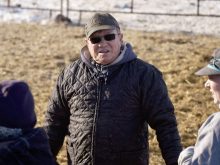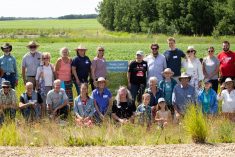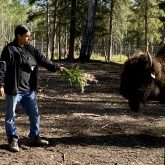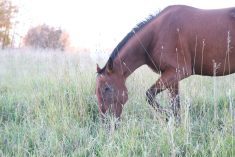This story has been reposted in recognition of the National Day for Truth and Reconciliation on Sept. 30. For more stories of Indigenous farming, food sovereignty, challenges and triumphs in the ongoing work of reconciliation, see our Truth and Reconciliation landing page.
In 2021, 2.8 per cent of Canada’s farm population was Indigenous – First Nations, Métis or Inuit. It’s a sliver of a sliver of Canadians, and yet it’s more than 21 per cent higher than 25 years ago.
In a period when the overall number of farmers declined by nearly 40 per cent, it’s a comparative boom. Statistics Canada points to several possible causes.
Read Also
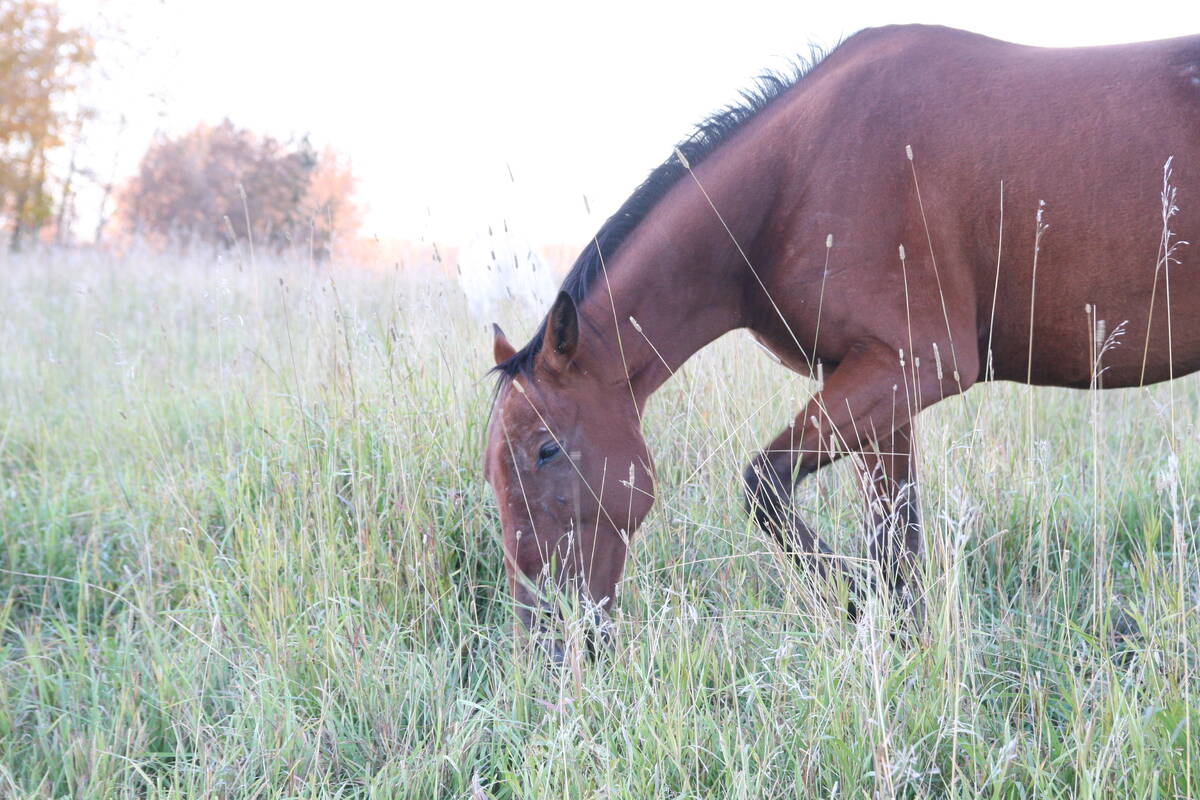
Beware giving horses too much iron
Horses consuming too much iron through diet or well water risk health problems like laminitis. Mineral testing forage and water is good practice for owners.
Why it matters: Those with Indigenous heritage are increasingly self-identifying on StatCan agriculture surveys, especially Métis farmers.
It could be that greater numbers of Indigenous people are choosing agricultural careers. In a growing movement for food sovereignty, Indigenous communities have set up farms and food-related programs that could contribute to this number. For instance, Peguis First Nation in Manitoba grows produce through its Smart Farm.
StatCan also said in a 2016 article that the relatively rapid expansion of the Indigenous population is spilling into the agricultural sphere. However, it noted more people are newly identifying themselves as Indigenous, a trend it said is continuing.
While there’s growth among First Nations, Métis and Inuit farmers, the Métis make up the vast majority of the total. The Co-operator asked whether more Métis farmers are claiming their heritage. The answer proved there can be a lot behind one small statistic.
A caveat and history
There’s an important distinction to be made between self-identifying as Métis and being formally recognized as part of the Métis Nation.
This past summer, then-Manitoba cabinet minister Kevin Klein took fire for claiming Métis heritage when the Manitoba Métis Federation said he hadn’t met their criteria for Métis citizenship, CBC reported in July.
Klein said he belongs to the Painted Feather Woodland Métis, which CBC reported is a for-profit company based in Ontario.
“The MMF ensures all our citizens are of historic Red River Métis ancestry confirmed though official genealogy, and are distinct from other Aboriginal peoples,” an MMF spokesperson told the Co-operator.
In conversations with Daniel Benoit and William Benoit, Métis brothers who do historical research work with the federal government, it became clear that the Red River Métis (of whom the MMF is the national government) have detailed genealogical records and familial knowledge.

The Benoits, for instance, trace their lineage back to the Lagimodiere family, one of the nation’s seminal families.
A Métis person isn’t simply someone of mixed Indigenous and European heritage, although the word originally referred to their “mixed” ethnicity. They’re a distinct people with a distinct history tracing back to the early fur trade in North America, when the voyageurs travelled far into the interior of what’s now Canada to source furs for Europe.
Marriages between voyageurs and Indigenous women “in the fashion of the country,” besides providing love and companionship, built familial ties and trade relationships between the fur-traders and First Nations, wrote Jean Teillet in The North-West is Our Mother.
Many of the North West Company men lost their jobs when their employer merged with the Hudson’s Bay Company in 1821. Many of these, called the Freemen, moved to the Red River with their Indigenous wives and children.
The Freemen originally lived with their wives’ communities, but slowly began to live independently. They formed hunting brigades with other Freemen families, whose children intermarried and formed large, extended family groups.
They began to see the northwest as theirs, and themselves as free traders.
“This is the fertile soil into which the Métis Nation was born,” wrote Teillet.
There is far more to the story, but suffice it to say that these groups formed the backbone of the Red River Métis nation, with a shared origin, culture, language (Michif) and de facto military via the organized and disciplined buffalo hunters.
When Manitoba became a Canadian province in 1870, the Métis would have been the primary population in the area, the Benoits said. However, that was soon to change.
The reign of terror
When the water is low, near the baseball park in Winnipeg, you can still see the pilings from the old ferry dock. That’s where one of the Benoits’ ancestors, Elzear Goulet, was killed as he tried to escape an angry mob.
“It was an ugly time,” said Daniel Benoit.
In the latter half of the 19th century, Canada — until then, largely confined to the east — was encroaching into the northwest and had plans to annex it.
“The idea that there was such a thing as a collective Métis people … never entered their minds,” Teillet wrote.
The Métis, who were self-governing with established parishes, didn’t take this lying down.
In 1869, Louis Riel had risen to prominence, and led the Métis in resistance against the Canadians. Tensions boiled into armed conflict.
One of the people who died in this conflict was a Canadian named Thomas Scott whom the Métis tried and executed as a murderer and would-be assassin of Riel, Teillet wrote.
Scott became a quasi-martyr for the Canadians, who used his execution to whip up anti-Métis sentiment.
While armed resistance ended with the formation of Manitoba as a Canadian province in 1870, that anti-Métis sentiment stayed strong. Canada sent soldiers into the new province, among them men hell-bent on revenge for Scott’s death and other perceived crimes.
Teillet quoted one: “The pacification we want is extermination.”
To the Métis, the soldiers were an occupying force. Fearing for their safety, many families quietly left Red River. The people who stayed lived in increasing fear and chaos, and coined the term “Reign of Terror.”
Meanwhile, the bison herds so important to the Métis way of life had all but vanished. Canada was bringing settlers, such as the Mennonites, to farm the land.
“[The Métis] were also waiting, without much help from the distant federal government, for reassurance that title to their river-lot homesteads and farms would be guaranteed,” notes the Canadian Encyclopedia.
Métis attempts to protect their rights culminated in the North-West Resistance and the Battle of Batoche, which the Métis lost.
Six-year-old Rosie Darling summed up the consequences in an online video telling a kid’s version of the Métis people.
“So many things that they worked so hard to build were burned to the ground. Their children were the ‘Defeated Generation.’
“Their babies grew up in a world where being Métis was a really bad thing,” Darling explains. They were the “Shamed Generation,” who taught their kids to hide their Métis heritage. This led to generations who didn’t know their heritage.
Reclamation
Jason and Erin Boily own Iron Head Ranch, where they raise bison near Richer on land that’s been in Jason’s family for generations.
That they’re Métis is mentioned in the first few paragraphs on their website. Bison are integral to Métis culture, and the Boilys not only raise bison, but use them to support their community. The Manitoba Métis Federation’s bison herd is on their land, and they’ve also sold bison to the Métis government to be distributed to citizens.
Boily told the Co-operator his family wasn’t always so open about its background.
“It wasn’t something that was really spoken about,” he said. “Not that they were ashamed, they just kept everything very quiet.”
He had uncles and aunts who went to residential schools, he said. Hurt and past trauma made them reluctant to be identified as “half breeds.”
“It was easier to assimilate than it was to be proud.”
Erin, who grew up across the province in San Clara, had always been immersed in her Métis culture. When they met as young adults, Boily said her influence opened his eyes to who he was.
“By that point, at that age, I didn’t care who knew and what,” he said.
He began talking with his mother about their culture, and she opened to it also.
Rosie Darling said her mom’s generation, through detective work, found out who they were. They were the Found Generation, who taught their kids about their culture.
There are many reasons why two successive agriculture censuses have found more Indigenous farmers, but it’s possible that some are also part of this generation.




